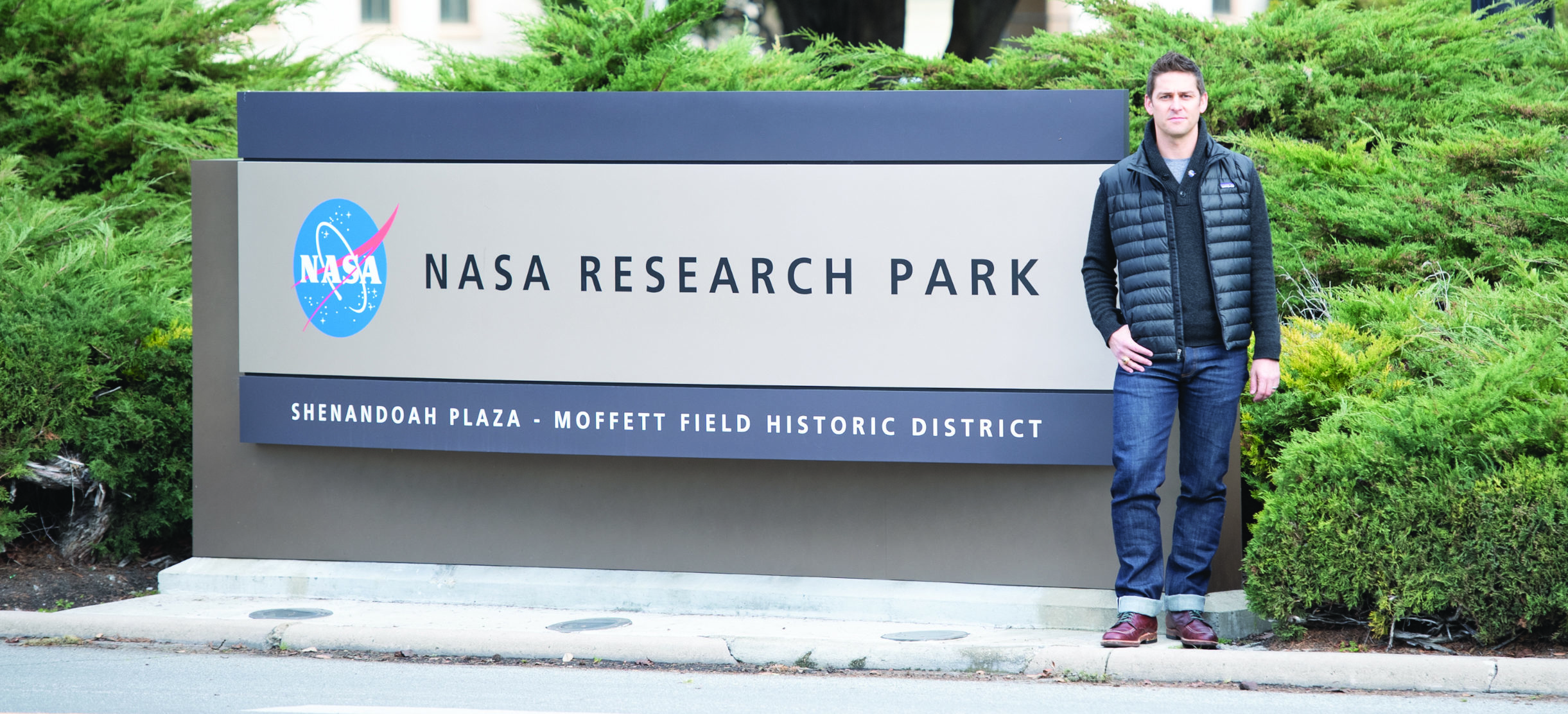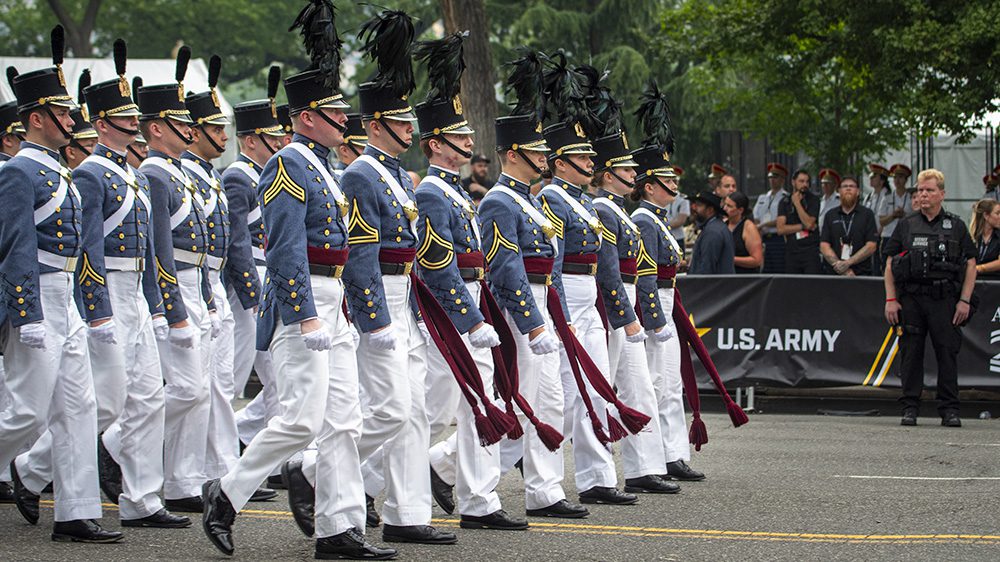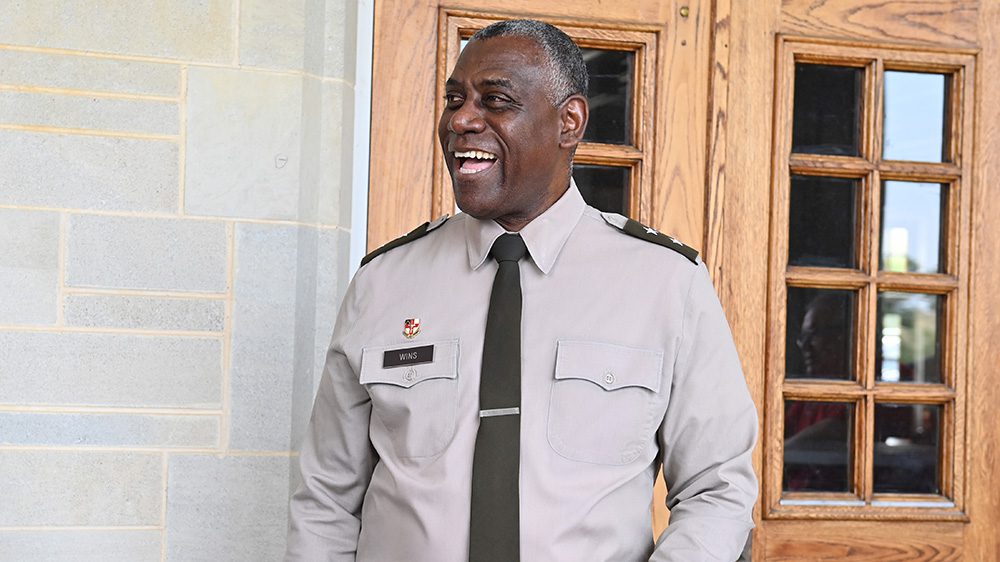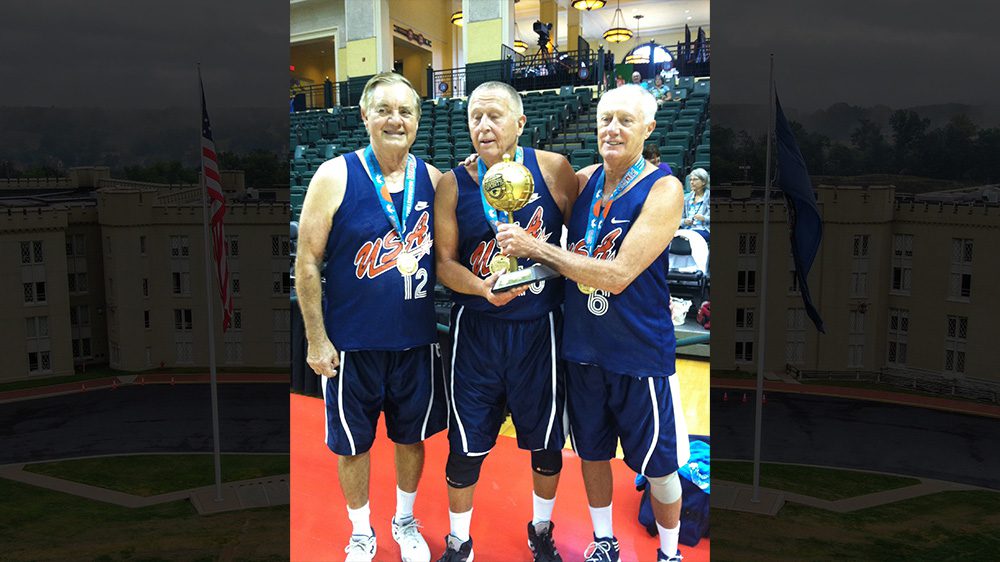“I’m not a rocket scientist,” said Matt Sharpe ’04 – clarifying, since he has been working at NASA since 2007. “I just happened to get into rockets. I’m not an engineer. … I have no idea how they’re doing that.” Communication – leveraged through technology – is, however, Sharpe’s area of expertise.
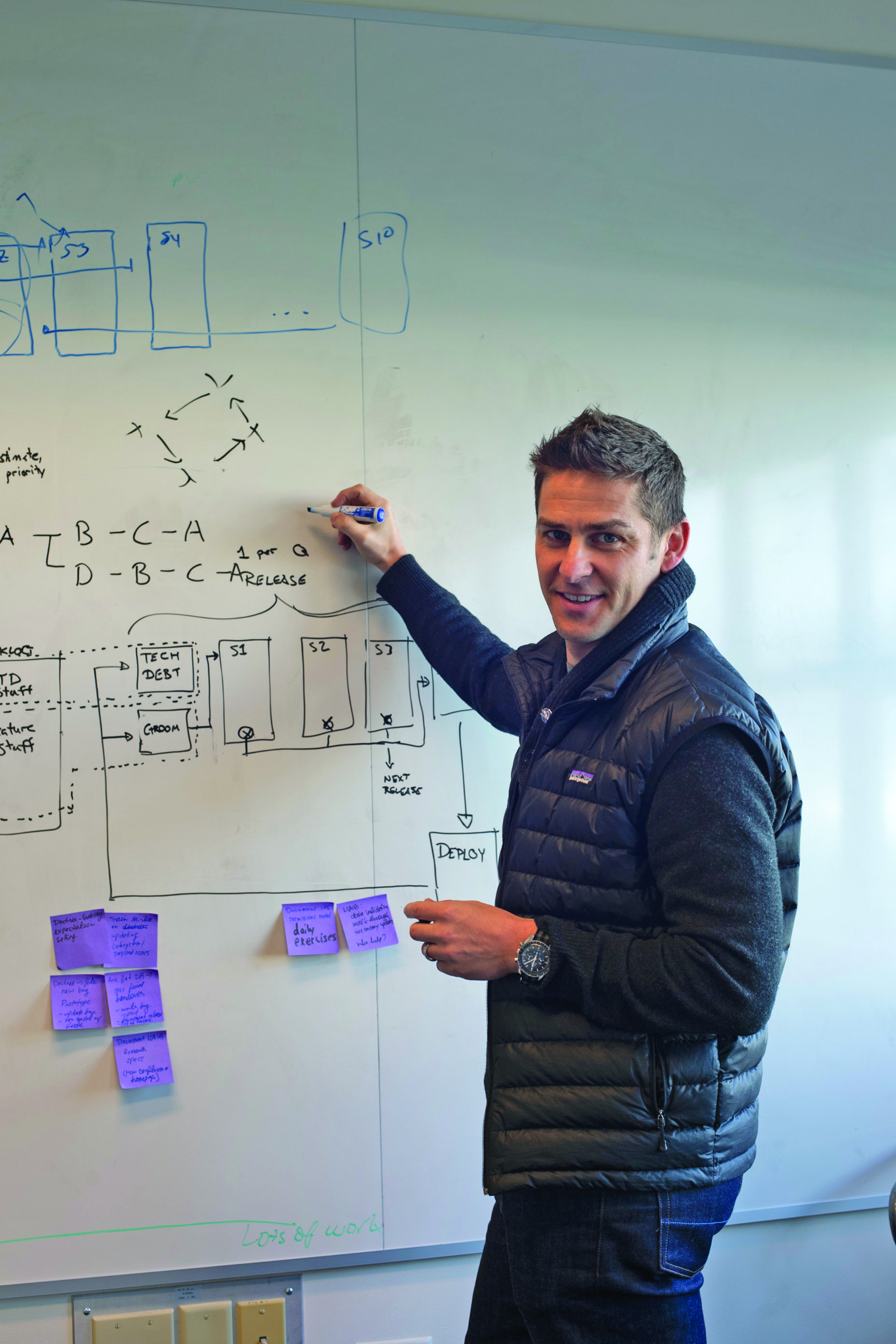
Matt Sharpe ’04 working at NASA in a field called human-computer interaction. In HCI, technology – fueled by computers – and people are brought together by experts. The experts design, build and tweak software with the end goal of maximizing the technology’s usability. Photos by 23images Photography.
Sharpe’s work for NASA is in a field called human-computer interaction. Sharpe was introduced to the then-emerging field at VMI while pursuing his bachelor’s degree in computer science. In the midst of life at VMI, Sharpe “realized I didn’t like computer science. If I really didn’t like computer science and I’m a computer science graduate, what [could] I do next?”
The HCI field was great match for Sharpe: “The aspect that I really, really like about computers is usability – usability and design.” In HCI, technology – fueled by computers – and people are brought together by experts. The experts design, build and tweak software with the end goal of maximizing the technology’s usability.
While he was pondering future career choices and looking into HCI, Sharpe had another internal debate – whether or not to serve in the military. An Institute Honors full-scholarship cadet who was honored in many ways for his academic achievement at VMI, Sharpe began considering if he could better serve his country in a civilian capacity. “To me, the answer became yes,” he said.
With that choice made, he began looking into graduate school options, and – on a scholarship from defense contractor SAIC – completed a compressed master’s degree at Carnegie Mellon University, followed by working at SAIC for a couple of years before going to NASA.
Sharpe, who purposefully studied subjects beyond computer science while at VMI and who wryly notes that he “was annoyingly one class short of a double major in English,” is a champion of clear communication. This certainly encompasses computers but also – and perhaps more importantly – means using precise language to communicate to a specific audience.
“I love the English language. I don’t feel like people really see the connection to a broader set of fields. For me, when you talk about usability and design, how language communicates is incredibly important,” Sharpe said. “The language that you’re using in design is very, very important. I think more broadly than that, what I’ve come to realize is that every single technological change is a culture change. You’re changing the culture in some way, and that means that you have to be able to communicate in a way that resonates with that culture – whether that’s an engineering team, whether that’s a board of advisers, whether that is a C-suite level executive – it has to resonate with them. And that you can only do through the English language.”
When Sharpe began working at NASA, internal communication – although couched in technical terms – was a huge focus within the agency. NASA was responding to the findings of the investigation into the 2003 Columbia space shuttle explosion. In response to the investigation, a nascent group was initially tasked with writing requirements for a new problem reporting system. The group was HCI and Sharpe’s home at NASA.
The space shuttle program had well over 25 separate problem reporting systems, Sharpe explained. The problem with so many systems is “they didn’t integrate well … you don’t really get a good integrated picture. If you do get a good integrated picture, somebody’s got to go to those … different systems to see what things are related and manually put all that together – and then it’s stuck in somebody’s head.”
In the case of the Columbia disaster, a weak point in the shuttle’s heat shields caused the shuttle to disintegrate during re-entry. The weak point was caused during launch when foam fell off the fuel tank and struck the shuttle’s heat shields – an impact of 500-plus miles per hour.
That foam falls off the fuel tank – called the orange tank in NASA circles – “was a known thing. It was designed to do that. It was a well-documented problem on the fuel tank,” Sharpe said. “It wasn’t really completely understood from an integrated perspective how that foam falling off could potentially affect the [space shuttle].”
When Sharpe came onboard, the team he joined had just spent several months researching problem reporting systems in other domains and had created a prototype system. The team looked at everything from Navy vessels, which had many similarities with NASA systems, to nuclear reactors as models. One of Sharpe’s first tasks was to add two new “engineering data sets” – or raw data gathered from specific areas – to the system.
Fast forward a decade-plus, and Sharpe is the assistant chief of the human-machine integration division. His team still works with problem reporting and enterprise software, but what’s most exciting to Sharpe is that within his team, he has “massive autonomy.” His team is able to nurture projects from a whisper of an idea to viable end states: Finished, usable products. Aside from following the innate constrictions of a government system – inner-agency and federal regulations plus mandated cybersecurity levels – Sharpe is able to run his group “like we’re a little startup within the government.”
“From the moment somebody comes to us and says, ‘Hey, I don’t know how you do what you guys do, but can you do it on this thing?’ we go in and we do user research, we understand what they’re looking at, we design their product, we build that product and then we host and maintain that product for them, we do their training, we do our own help desk, we do every bit of it from beginning to end,” Sharpe explained. “The thing that’s fun about it is that we own the entire thing, which is really not common.”
Much of Sharpe’s time is spent working on “enterprise software for the engineering knowledge of a vehicle. The simplest example of that is problem reporting.” For instance, if a part breaks on the International Space Station, a long chain of actions ensues: Someone has to report the problem, figure out which part broke, how to report that the part broke, how to fix the part – document all the preceding – and then get approval to move forward. Sharpe’s team builds software specific to each vehicle or system need at NASA – in this case, fixing a part on the ISS. They also work on preflight verification systems and often add capabilities – like linking vehicle parts supply to a problem reporting system – to pre-existing systems.
Daily, Sharpe deals in industry-specific terms – enterprise software, R&D, artificial intelligence, human-in-the-loop and machine learning. Industry-speak aside, the real challenge, Sharpe said, is not actually gathering data. It is “to get that data in a usable format.”
“When you talk about integrating – putting the engineering data together, it’s about getting the right data to the right people at the right time,” he continued. “For them to be able to make the decisions they need to without having to wait weeks for people to pass around information and email each other. … to be able to spend time doing analysis without spending all your time trying to find the information.”
Everything Sharpe’s division does is the “real-deal, in operation supporting [NASA] missions.” His specific role involves “forward looking research and design,” including “internet of things, augmented reality [and] cross system search machine learning … wherever we think we’re going next. … Those are the kind of areas where we do forward-looking research and development so we can plow that back into our operations.”
Aside from his work at NASA, Sharpe also keeps current by serving on the boards of startups and recently earned a Master of Business Administration degree from the Naval Postgraduate School. His experience at VMI, Sharpe said, has been helpful to him in his professional life. “I think VMI challenges you in such a way that you know what you are capable of. It gives you this perspective of, ‘Yeah, I’ve been through the worst. I’ve done worse; just dig in and get it done.’”
His team – though they don’t build rockets in an agency synonymous with rockets – has become known for that ‘get-it-done’ mentality: “That is why we have the autonomy that we do. We’ve proven that we deliver. We’ve proven that we know what we’re doing. We’ve proven that when we say we’re going to do something, we actually do it. You go back to those simple things.”
Simple things, values even, which – although not rocket science – may have sprung from a foundation built in imposing tan buildings, circled around a Parade Ground, topping a hill in Virginia’s great valley.
-

Molly Rolon Editorial Specialist

